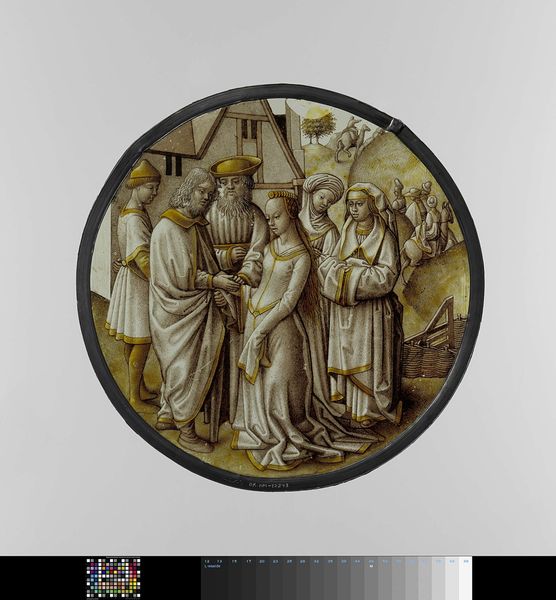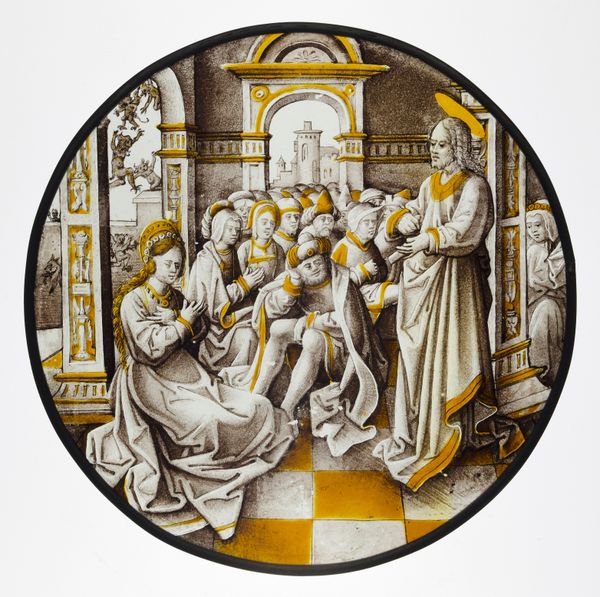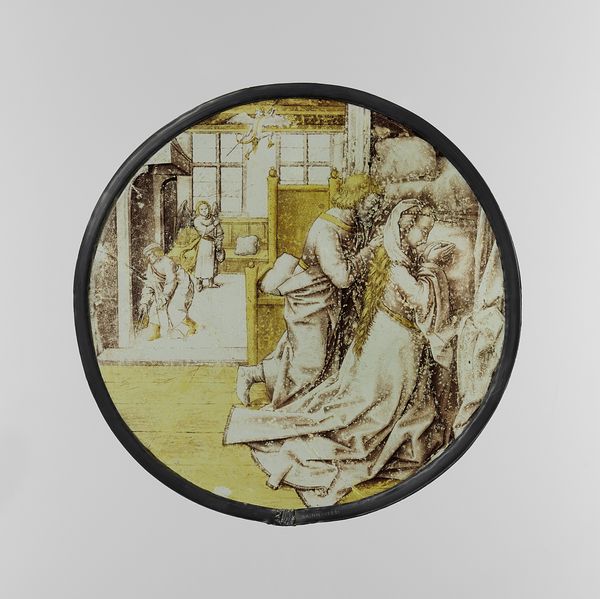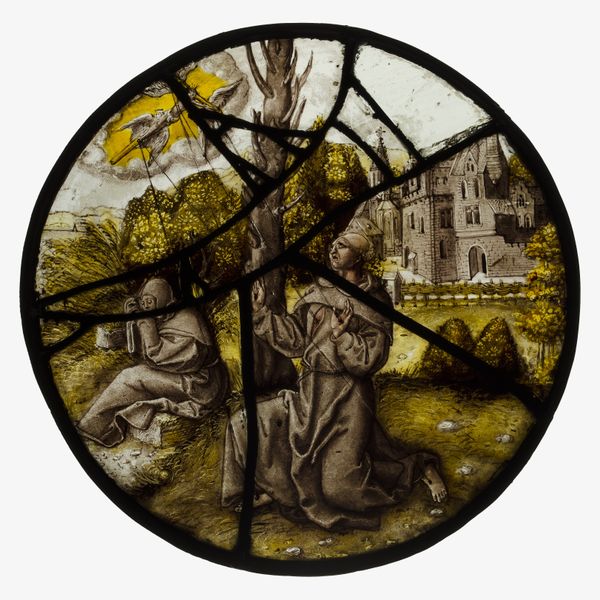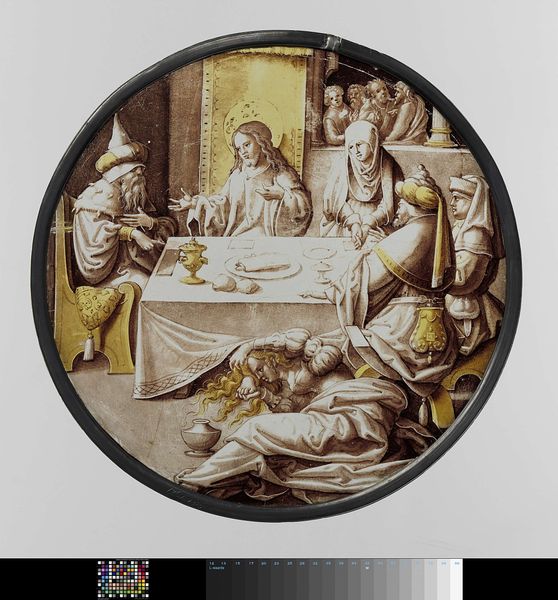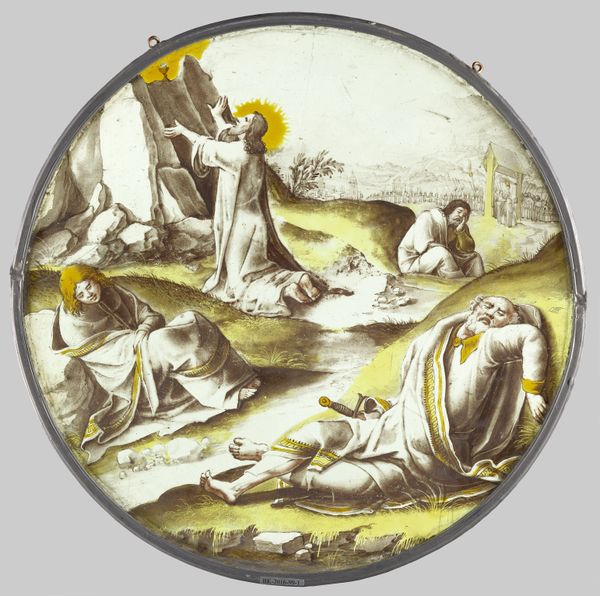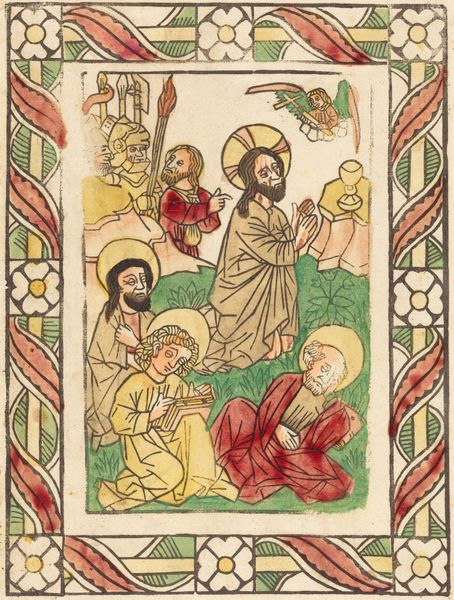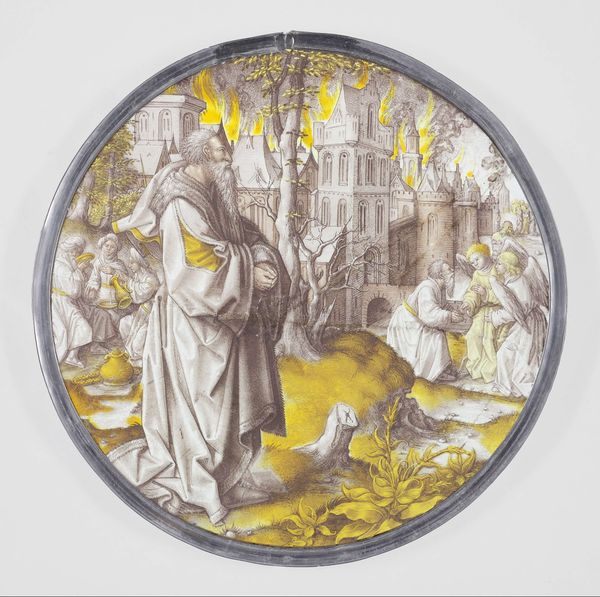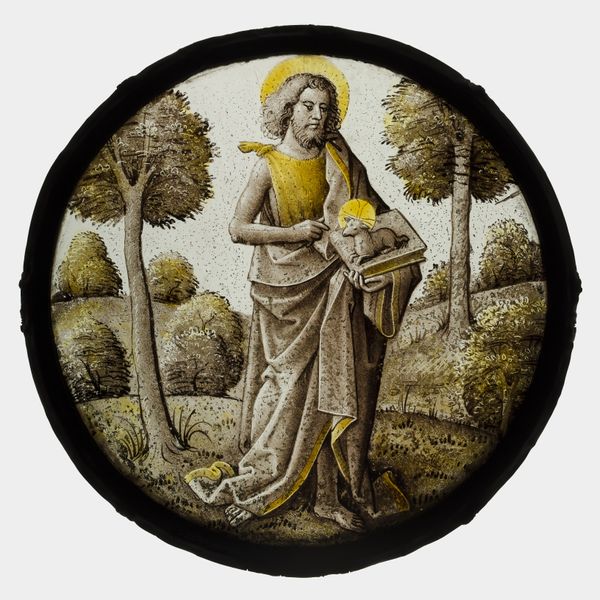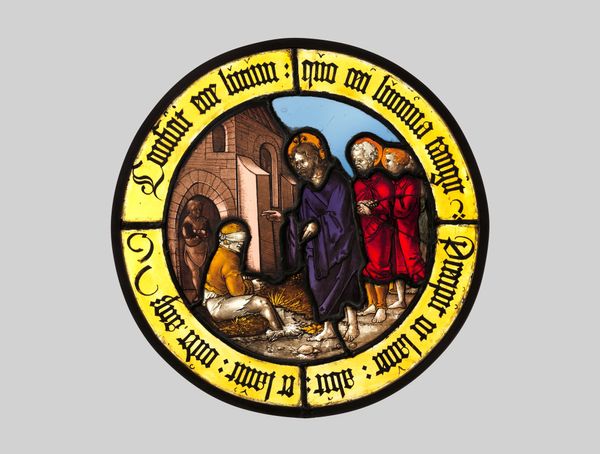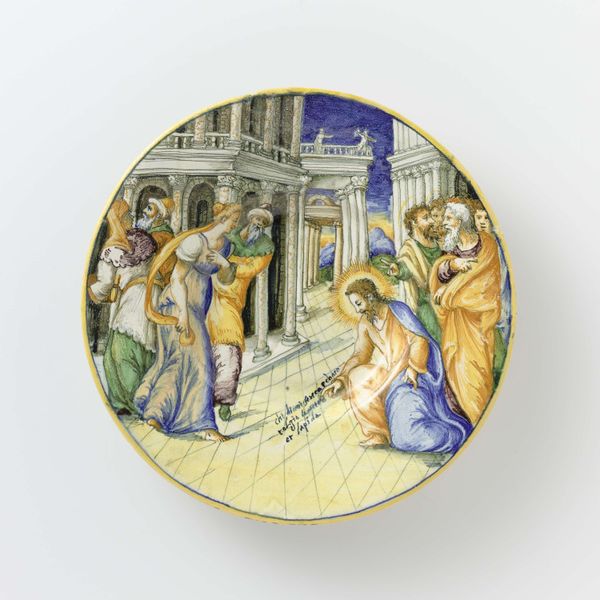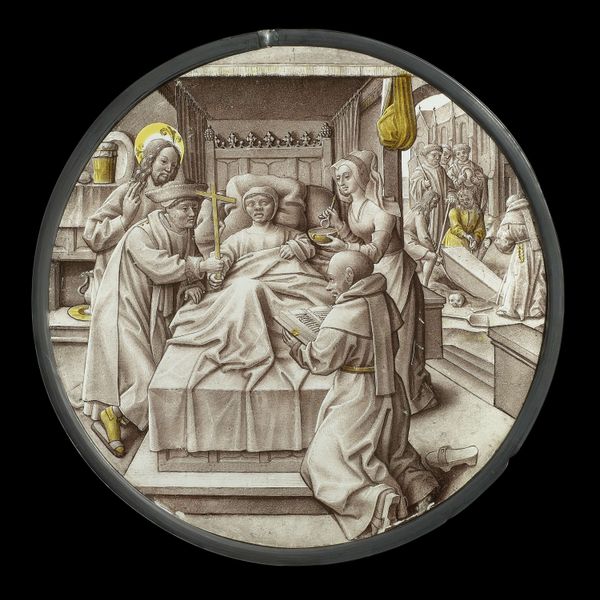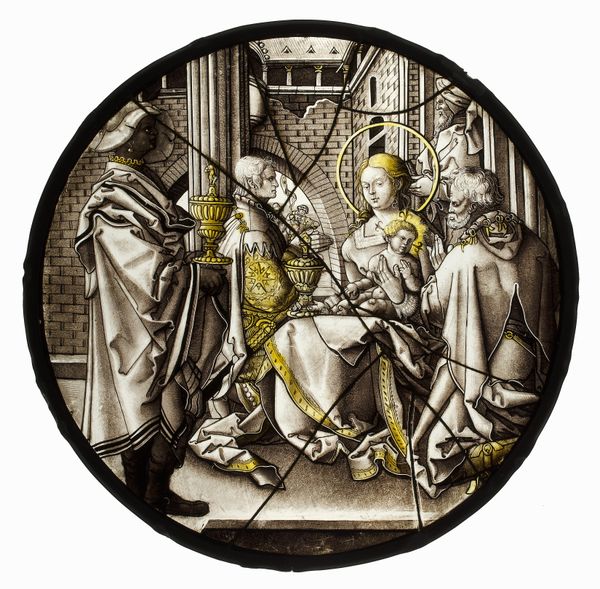
Roundel with Christ Taking Leave of His Mother 1507 - 1515
0:00
0:00
glass
#
medieval
#
landscape
#
figuration
#
glass
#
history-painting
#
northern-renaissance
#
virgin-mary
#
christ
Dimensions: Overall: 6 1/2 in. (16.5 cm)
Copyright: Public Domain
Curator: Here we have a glass roundel, "Christ Taking Leave of His Mother," created between 1507 and 1515 by Hans Schäufelein. It’s a striking example of the Northern Renaissance style, currently held in the collection of the Metropolitan Museum. Editor: My immediate feeling is one of subdued grief. The limited palette amplifies the gravity of the moment; Christ’s departure is palpable. The circle feels like it's encompassing their sorrow. Curator: Absolutely, the round shape itself is not accidental; this format was quite popular in secular and religious contexts, often integrated into windowpanes of wealthy homes and churches to depict iconic moments or symbols meant to evoke spiritual reflection. Editor: Note the distinct halo over each figure, an ancient solar symbol adapted within Christian iconography to signify holiness. The landscape behind them, rendered with stark simplicity, feels almost secondary, underscoring that the focal point is this familial and sacred farewell. The artist employed these familiar visual elements to trigger a profound emotional and psychological impact, tapping into collective memories associated with biblical narratives. Curator: This scene taps into the political context, too. Consider the rise of humanist ideals emphasizing individual piety over established ecclesiastical practices during the Reformation period. Images such as this provided direct, emotionally accessible narratives that engaged viewers directly with the Gospels, shaping public devotion and critique. Editor: Indeed, religious symbols were never neutral. Here, Christ's slightly raised hand and forward step also convey an immediate sense of action—destiny. Curator: This work reminds us that religious art served as a cultural mirror reflecting theological, social and political issues, engaging a broader public, shaping identity and debate. Editor: And the round form of the artwork, through its constant nature and its historic use as the material for mirrors, reflects viewers' understanding back at themselves, demanding a visceral and emotive response that crosses time.
Comments
No comments
Be the first to comment and join the conversation on the ultimate creative platform.
